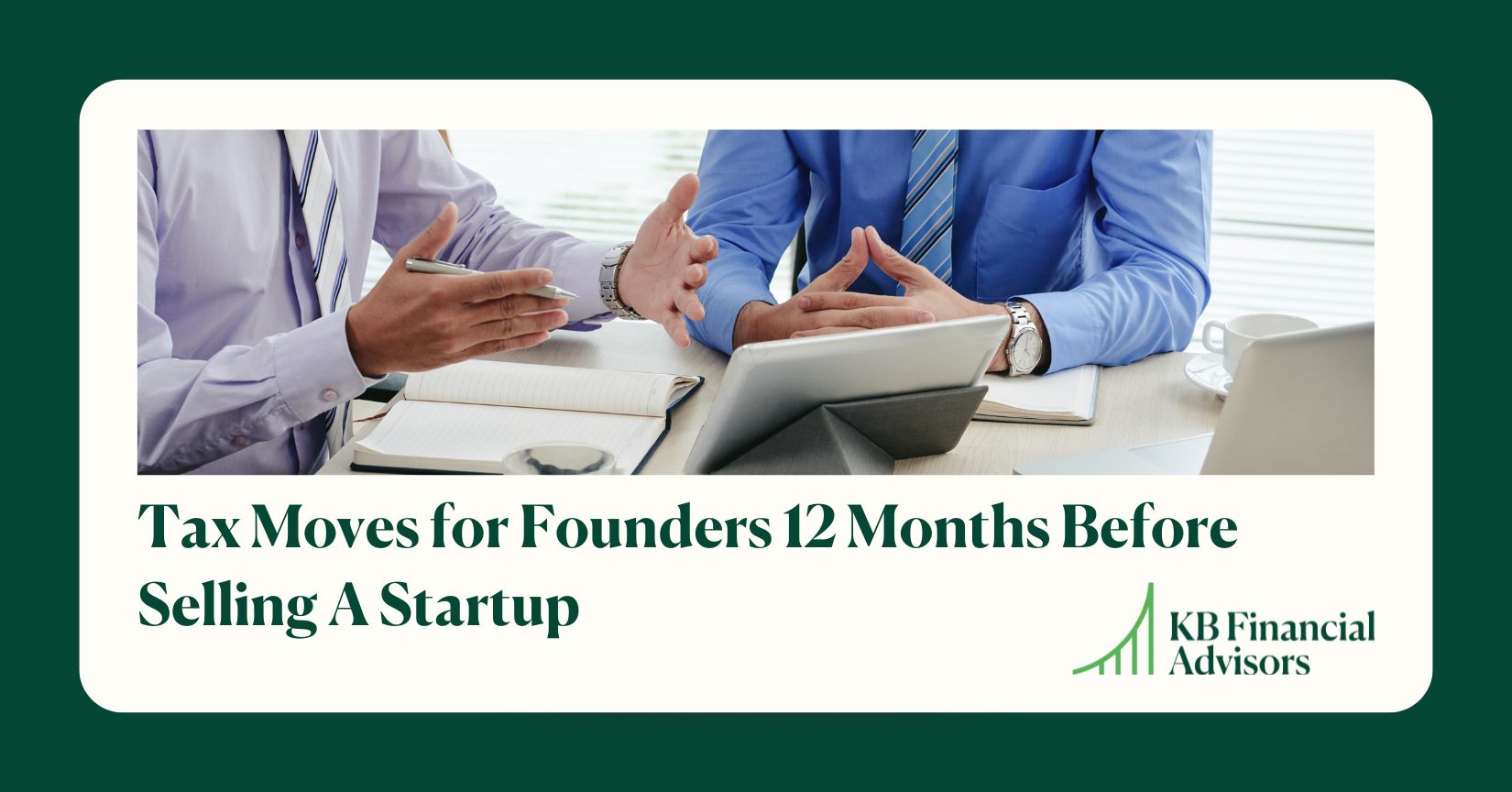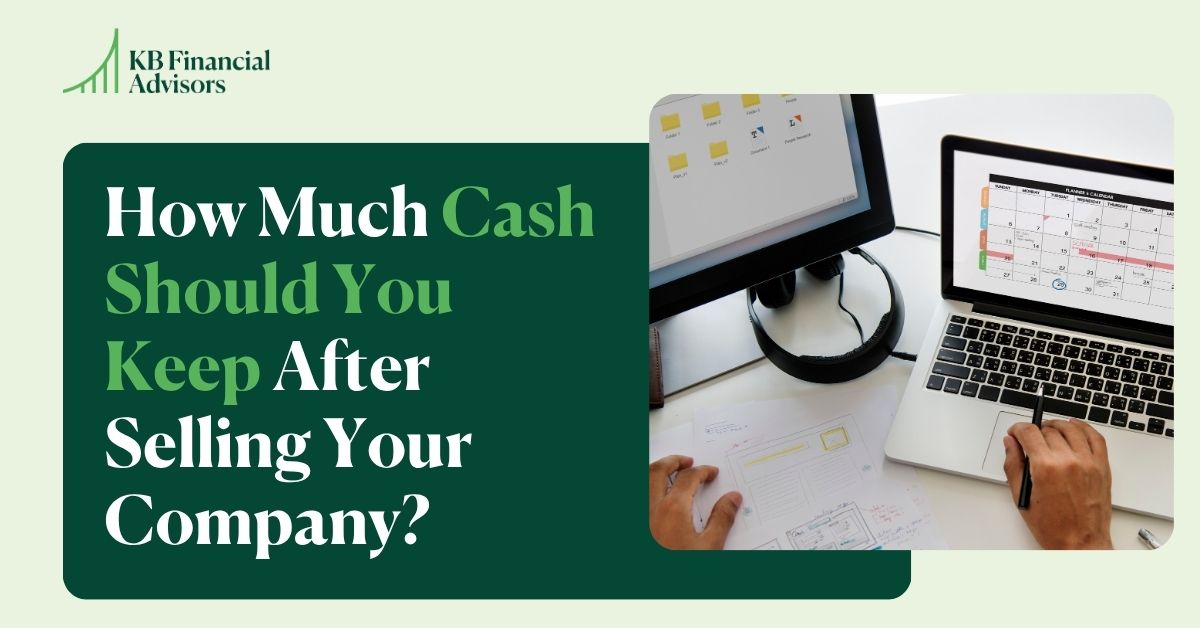Selling a startup is one of those once-in-a-lifetime milestones. You’ve poured years into building it, and now you’re 12 months away from an exit.
First of all, congratulations! This is huge.
But before the champagne, there’s something just as important to get right: your taxes. The decisions you make in the year leading up to a sale can mean the difference between keeping millions more in your pocket or leaving them on the table.
Here’s a timeline of the tax and financial moves every founder should make before selling a company.
12 Months Before Selling: Build Your Exit Team
The first step isn’t about numbers, it’s about people. You want to assemble your Legal, Finance, and Tax team early, so you’re not scrambling later.
Here’s who you’ll need:
- Legal: To handle all legal matters related to your startup and personal dealings. Your legal team should include these roles: the General Counsel for the Company, the External legal team to run the company’s position in the liquidity event, and your Personal attorney to facilitate your exit from the company.
- Finance: Target a brokerage firm that will facilitate the liquidity event. For your personal finances, find a financial planning firm to discuss what and how to use your liquidity.
- Tax: To handle all tax-related issues for your employees and yourself. You’ll need both your personal accountant and a tax team to handle the payroll considerations for the company and educate your employees. Your employees will have lots of questions; it’s a good idea to explore creating an intranet for resources on tax implications.
This group will be pivotal for the exit, helping you manage everything from legal paperwork to employee questions to the reporting of your own transaction.
At the same time, here’s when you start thinking about your exit strategy. Are you staying on after the sale? If so, for how long, and to whom will you report? What will happen to your salary and options? Deciding whether to stay for a year or move on immediately has significant implications for both your financial plan and tax strategy.

9 Months Before Selling: Check Your QSBS Eligibility
Now it’s time to get organized. Compile your stock certificates, grant agreements, exercise details, essentially everything tied to your ownership. Loop in your CFO to review company asset levels at the original time of issuance of founder shares.
Why?
Because this is when you determine whether your shares qualify for Qualified Small Business Stock (QSBS). If they do, you could exclude up to $10 million in capital gains from federal taxes.
If your shares don’t qualify for QSBS yet, you may still be able to use strategies, like a QSBS rollover, for starting a new company that would qualify. This is where you defer your gains by investing the proceeds of your QSBS sales into more QSBS within 60 days.
6 Months Before Selling: Run the Numbers and Nail Down the Deal
By now, your team should have reviewed the cap table and nailed down what your payout looks like. Ask your team to run projections at demonstrated payout rates and calculate what your tax would look like. Do you have enough set aside to pay your tax bill? That’s first and foremost.
Next, this is when you lock down these specifics with the buyer:
- Set a hard exit date
- Be crystal clear on the payout methods. Are you getting paid a lump sum, in installments, or by performance milestones?
- Will you receive cash, stock in the new company, or both? If you’re receiving stocks, ask for the company’s financials so your team can do due diligence.
If stock is part of the deal, consider whether you should file an 83(b) election or if there are ways to position the new shares for future QSBS treatment.
If you intend to start your own company, this is also a good time to consider setting it up.
3 Months Before Selling: Execute On Tax Reduction Strategies
Now that you’re clear on the funds coming your way, this is where we execute on those powerful tax-saving strategies, right before the deal closes:
- Setting up a Donor-Advised Fund (DAF): You can gift highly appreciated stocks or cash to the fund, which will let you take a big charitable deduction on your tax return in the year of the sale. But you still have the flexibility to donate to one, or multiple, charities over time. You don’t have to direct it to a particular charity right away.
- Tax-loss harvesting: If ever there was a year to realize investment losses, it’s this one. Selling losing positions now can offset some of the massive capital gains from your startup sale.
- Trusts: If you have kids or you live in a high-tax state like California, your attorney may suggest creating trusts to shift income or reduce state tax exposure.
- Retirement accounts: Don’t overlook basics like maxing out IRAs or 401(k)s, or even setting up a defined benefit plan if you’re launching a new venture.
- Establish an SMA account or Brokerage fund: Once cash hits your account, you’ll want to put funds into these accounts to reinvest and grow it in a tax-efficient way.
Closing Day: Cross the Finish Line
Finally, the big day arrives. Your startup is sold, the deal closes, and the funds hit your account. Pause here and celebrate, you deserve it!
But don’t forget the mechanics:
- Confirm you received the funds, and be sure they settle
- Check that the amount matches the agreement
- Then sit back and let your team take care of the rest
Your advisors should take it from here, managing the flow of money into the right vehicles. That could be your donor-advised fund, trusts, new company or diversified portfolio. They’ll also begin executing your tax-loss harvesting plan.
Eventually, all of this needs to be reported to the IRS and your state. The good news is that you would have planned well, there won’t be any surprises come tax season, and that’s a real win.
FAQs About Taxes When Selling a Startup
What is QSBS, and how does it help founders?
Qualified Small Business Stock (QSBS) allows eligible founders and early employees to exclude up to $10 or 15 million in capital gains from federal taxes when selling shares.
How do founders reduce taxes when selling a startup?
Strategies include QSBS planning, tax-loss harvesting, charitable giving through a donor-advised fund, and setting up trusts or retirement accounts.
Should I set up a donor-advised fund before selling my startup?
Yes, if you plan to make charitable gifts, funding a donor-advised fund in the year of the sale gives you an immediate deduction while allowing you to donate over time.
Want a quick overview of these strategies in action?
Watch our short video of our 12-Month Game Plan to Minimize Taxes and Maximize Your Exit to see the key takeaways and expert insights explained clearly.
The Takeaway
Selling your startup is as much a financial event as it is an emotional milestone. It’s easy to get caught up in the details, but the key is having the right team, the right plan, and enough time to execute it.
If you do this right, you’ll know exactly what your payout looks like, how much tax you’ll owe, and what strategies you’ve put in place to keep more of your hard-earned wealth.
Once the dust settles, don’t forget to celebrate what you’ve built. This isn’t just a transaction. It’s a huge achievement for you, your family, and everyone who helped you along the way!
Congratulations! You’ve earned it.




